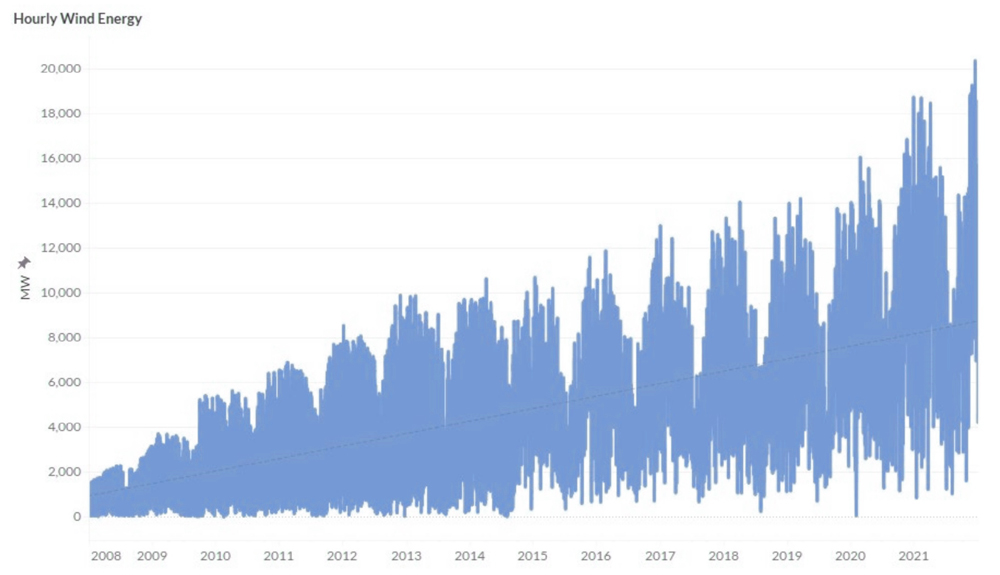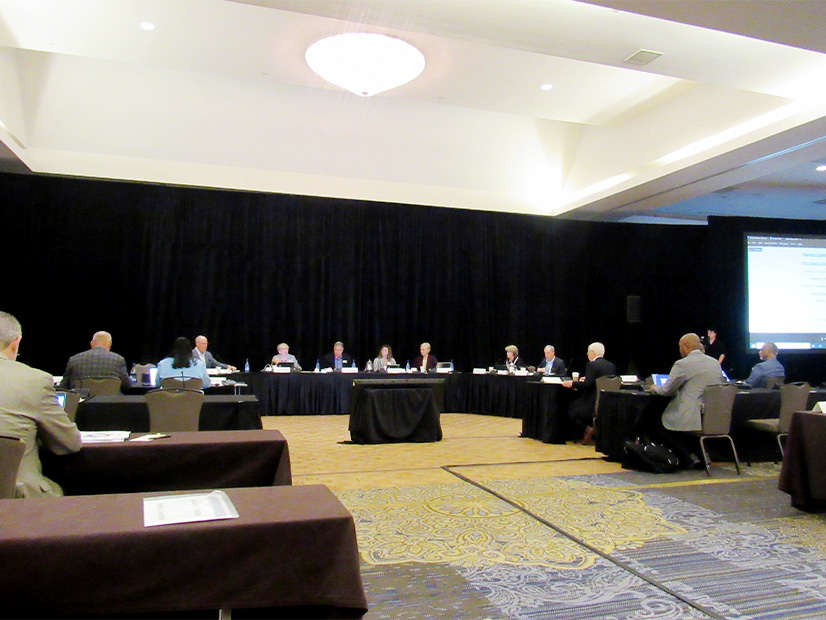MEMPHIS, Tenn. — MISO sees no end in sight to the system volatility that could plunge it into springtime emergency operations, staff said Thursday during a quarterly markets review.
“We face a rapidly transforming energy landscape,” CEO John Bear told directors during a Board Week meeting, warning of a delicate load-supply balance.
He said when MISO introduced its ancillary services market 12 years ago, “load was the only thing that was moving around.”
“Everything else was pretty static and predictable,” Bear said. “Where we stand is not sustainable, and it’s not safe. We have a lot of work in front of us.”
COO Clair Moeller said the RTO is laser focused on a “safe, reliable and affordable” transition despite proliferating operational complications.
“We’ve spent most of our time in committee meetings talking about volatility and uncertainty,” Moeller said, referring to the week’s activities.
“In the year 2000, volatility was a deterministic thing,” he said. “The volatility that’s facing us is more probabilistic than deterministic.”
Wayne Schug, MISO’s vice president of strategy and business development, said a growing renewables fleet and rapidly changing weather is driving increasing volatility and an “inability to deal with it.”
By 2030, as little as 57% of the RTO’s fleet could be dispatchable, staff said. Dispatchable resources accounted for 84% of the fleet in 2020.
Schug said that since 2017, average daily output swings and forecasting errors have grown by gigawatts and percentages points, respectively. He said while the grid operator continues to get better at output forecasting, the expanding wind fleet has blotted out any signs of improvement.
“I caution you about averages,” Schug said. “Our extremes are much higher.”

Moeller said that for three days in 2020, MISO’s entire wind fleet in the upper Midwest failed to generate a megawatt. He also said unexpected cloud cover could make a solar farm “disappear within three minutes.”
MISO will work to pre-position its system for bad days, Moeller said. Executives said plans for seasonal capacity auctions and big-ticket transmission projects should help.
Director Mark Johnson asked staff to invite a control room operator to a board meeting to address their recent experiences dealing with grid volatility.
Staff Warns of Emergency Ops
MISO’s Zak Joundi said while the RTO should have adequate resources through spring, it could declare an emergency if faced with restricted generation output and high demand in April or May. He said the spring outlook echoes last year’s spring peak estimate and resource availability.
“Uncertainty can be especially exacerbated in spring,” he told the board’s Markets Committee Tuesday.
Joundi said MISO is working with an aging generation fleet more prone to outages with increasingly uncertain return-to-service dates. He said the footprint’s current rate of generation retirement — propelled, in part, by state and federal policies — is outpacing members’ capacity replacements.
Staff expects the number of emergency near-misses to rise every year, Joundi said. He said MISO may expand a weekly winter fuel security survey of fossil-fuel owners into a year-round task. (See MISO Winter Fuel Security Surveys Now Permanent.)
During the recent winter, MISO said renewable generation accounted for an increasing share of load. On Jan. 18, 24 GW of wind generation served 30% of the RTO’s load at one point. On Feb. 19, MISO reported its first seasonal solar generation peak of 1.6 GW.
“As the portfolio has transitioned to increased levels of wind output, operators are managing greater levels of volatility and uncertainty, making complex unit commitment decisions,” Joundi said. “How can we have the right market product to incentivize … the right kind of flexibility to complement this volatility?”
“There’s no magic bullet, market products and tools, or transmission,” Director Barbara Krumsiek said.
Joundi said that the control room now manages more intra-hour instability and intensifying “wind droughts,” where wind output drops off below forecasts.
“We’re seeing a lot more output and volatility on the wind side,” agreed MISO Independent Market Monitor David Patton.
Patton said MISO racked up about $750 million in real-time congestion costs during the winter, the most ever for a three-month period.
He said the grid operator is limited on wind generation it can export from the Midwest westward to SPP, saturating the system at times and lowering energy prices. Patton also said part of the congestion problem lies in SPP not modeling MISO’s constraints in its day-ahead market, making some uneconomic generation units appear economic in the SPP market. He said he was working with SPP and its monitor to fix the problem.
Patton also said drought conditions in the Canadian province of Manitoba led Manitoba Hydro to import more power from MISO, increasing constraints in the footprint’s northern portion. Manitoba Hydro’s Audrey Penner said a “deluge” of snow this winter will improve the situation as it thaws.
Coal generation’s share of energy output dropped from 41% last winter to 36% this winter, Patton said, because of retirements and limited coal supplies. Natural gas generation’s output share rose from 26% in 2021 to 29%. He said natural gas generation would have grown more this winter but for the “run up in gas prices.”
Patton said he expects difficulties with securing coal to continue into the foreseeable future.




